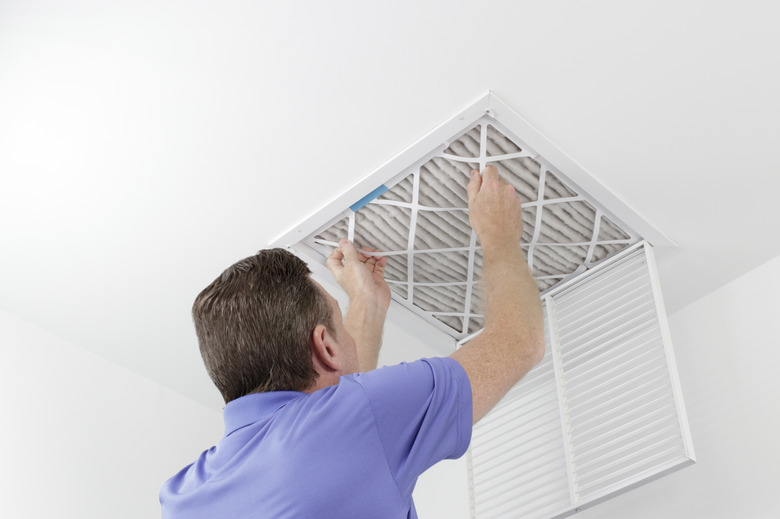Easy Way To Seal Off Old Ceiling Vents That Don't Close Tightly
We may receive a commission on purchases made from links.
Energy efficiency is an extremely important subject, especially if you are the person who pays the heating and cooling bills. Home HVAC systems are designed to circulate air throughout the home, but they typically use a lot of energy to run. Vents or registers are the places where the air exits or enters the ductwork through a wall, floor or ceiling. If you want to close a vent to an unused room to save energy costs but the vent won't close tightly, you have some options to fix the problem.
How Vents Work
How Vents Work
Before you decide to close off the vents to any room, consider their important function in your HVAC system. Like the human body, where blood flows away from the heart in arteries and flows back to the heart in veins, HVAC systems push heated or cooled air throughout the home with one system of ductwork (supply). Another duct system pulls air back to the heat pump or furnace, where it is heated or cooled and recirculated throughout the home (return).
A great deal of thought and calculation related to room temperature, humidity and airflow volumes go into determining the size and shape of the HVAC system. Sealing off vents permanently can throw off the balance and pressure in the system, which can make it work harder and wear out faster. Because of the extra work, your HVAC system might become less energy-efficient when you close off vents in certain rooms.
Which Vents To Seal
Which Vents To Seal
You must determine if the vent or register that you want to close off is a "supply" vent or a "return" vent. Do not seal the vent if it is a return vent. Sealing return vents will cause the air pump or furnace blower to work harder and will likely cause damage. The system needs a constant supply of air while it's running to function properly.
You can seal off supply vents, but do not seal off too many of them. Sealing off too many vents can cause damage to the system by increasing pressure. Determining how many is too many is a complex calculation that will require an expert's guidance. However, sealing one or two supply vents shouldn't affect the overall performance of the HVAC system.
Permanently Covering Vents
Permanently Covering Vents
You should consider permanently closing the opening if the vent is part of a system that is no longer in use. This might happen if a professional reconfigures the ductwork and that vent no longer has air supplied to it. Install drywall in the old vent opening, then tape, texture and paint the patch to match the existing ceiling finish.
The least expensive method to seal the vent opening is to remove the vent cover from the ceiling, cut a piece of cardboard to fit inside the vent cover, tape the cardboard in place with polyurethane tape, and reinstall the vent cover.
Alternative for Poorly Closing Vents
Alternative for Poorly Closing Vents
If the HVAC system is still in use and you want to seal an old vent cover that doesn't close properly, the simplest method is to replace the old vent or register cover. The new cover should seal better, allowing you to shut off the vent if you want while still having the option to reopen it easily.
The supply vents use registers, which have louvered dampers that allow you to close the register when you want. Grilles go on your return air vents. They don't have dampers since you should leave them open at all times.
You might also try duct sealing if your goal is to improve energy efficiency. This can reduce air loss when the heated or cooled air travels to the vents.
